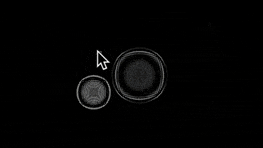
Interactive Walkways
Introduction
I've been working with Prof. Carolina Aragón on interactive walkway projects in the department of landscape architecture at UMass Amherst.
Walkways are usually hard, grey, and boring. We have been developing sustainable interactive walkway concepts that will create new experiences for pedestrians. Inspired by the dynamics of water, we aim to make a walkway feel fluid without it actually being wet.
Piezoelectric Walkway (Step & Flash)
In spring 2017 I worked on a piezoelectric walkway project called Step & Flash. I designed and 3d printed a functional prototype mechanism that ultimately would store the energy from impacts produced by human footsteps and release that energy over time by vibrating piezoelectric elements, which electrically charge up a prototype energy harvesting circuit to randomly blink LEDs.
At the end of the semester, we determined that implementing such a walkway would be prohibitively expensive for the mechanical systems, and would require a lot of engineering time in order to increase the efficiency, so we moved on to other walkway concepts.
Step & Flash
Google Drive Repository

Proof-of-concept mechanism demo
Pressing down (stepping) causes a flywheel to spin in one direction. The nut disengages with the flywheel when the screw causes it to spin in the opposite direction.

Prototype energy harvesting circuit
The stepper motor is an analog for the flywheel above. The flywheel beads whack the piezo elements, generating electricity, which power the microcontroller to switch on the LEDs when there is enough energy.
Photoluminescent Gravel
In 2018, we experimented with photoluminescent (glow-in-the-dark) gravel. I made a prototype plate that lights up when stepped on to recharge the gravel. The plate is designed to flex in a controlled fashion in order to press a button which turns on a UV LED. The gravel absorbs the light energy and reemits it over time, creating the effect of a glowing footprint.

Photoluminescent gravel demo
FutureWATERS|AGUASfuturas
The FutureWATERS project was a temporary public art installation on the East Boston Greenway in November of 2018. The project increased local discussions about climate change and had three main components: A suspended wire mesh showed the height of the anticipated 1% flood levels in 2030 and 2070, thermochromic spheres which change color showed the predicted high temperatures in 2030 and 2070, and, inspired by the dynamic ripples of the water surface, spheres glow in response to pedestrian motion, causing a ripple effect that follows them as they walk down the path.
My contribution to the FutureWATERS project was the light units. I reverse engineered and heavily modified the circuits in some solar powered garden lights and some motion sensor modules in order to make the lights turn on at night when there was motion in front of them. The light units were woven into panels along the walkway which turned on as pedestrians walked by, providing a ripple effect.
• For all the gory technical details, take a look at my FutureWATERS technical journal
• East Boston Greenway article about the installation
• Matt Conti's lovely photos of the installation
• Carolina Aragón's installation project page and video:

Timelapse of making the light units

Testing the light units

After installation
Cellular Pavers
We are currently working on an interactive walkway made of smart pavers. Each paver is a sealed unit, with its own LEDs, solar panel, and battery. The pavers each have a capacitive pressure sensor (which work surprisingly well during testing) and they also have the ability to communicate with each of their neighbors wirelessly via infrared signals. The pavers collectively create a cellular automaton, which obeys a set of rules which produce ripples of light that propagate across the cells when stimulated by the pressure sensors.





